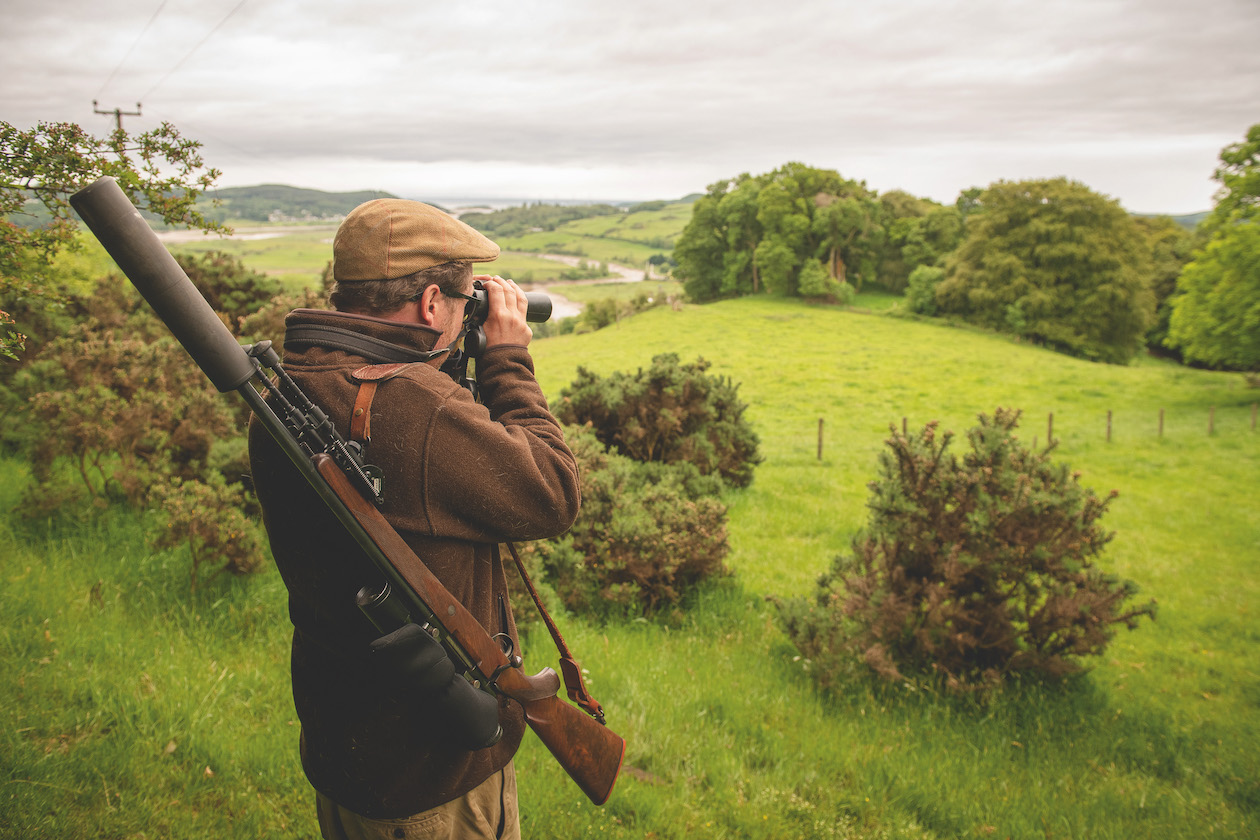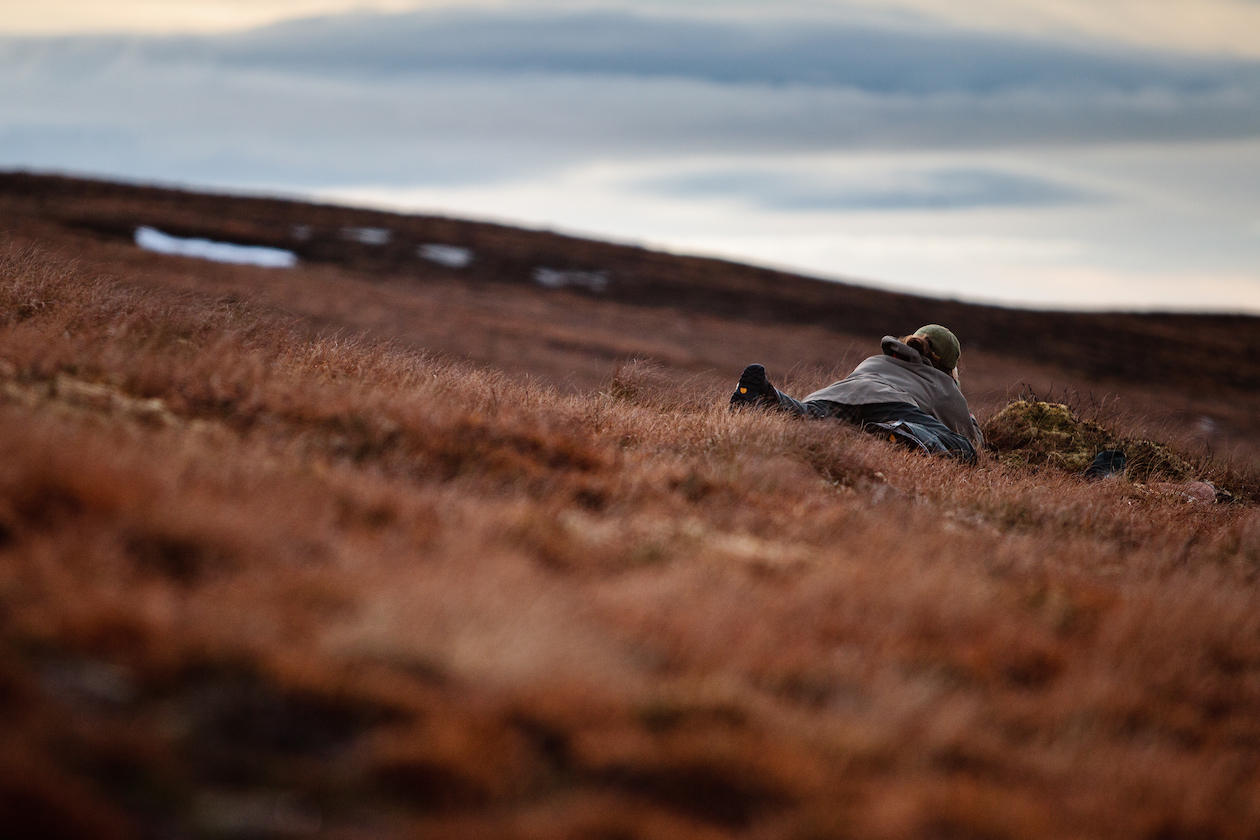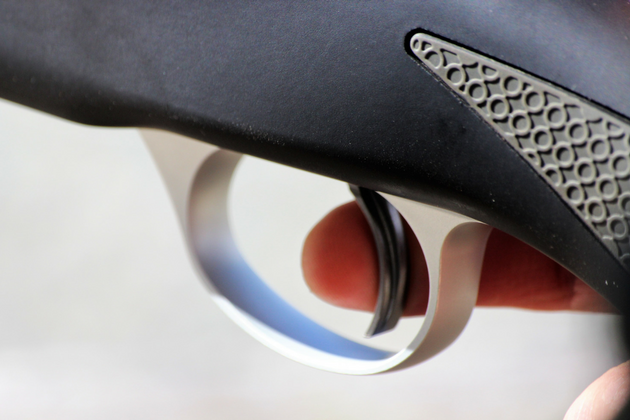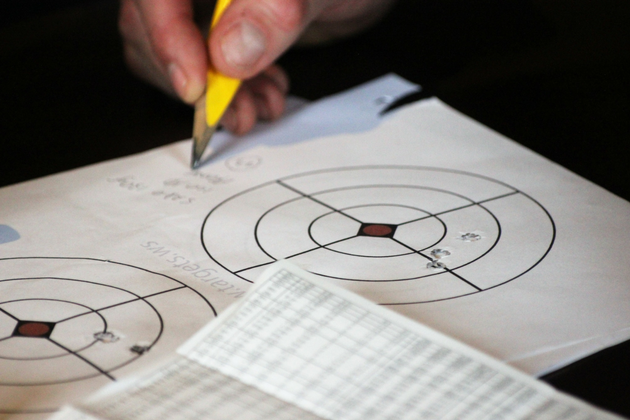Win CENS ProFlex DX5 earplugs worth £1,149 – enter here
Tips to improve your rifle shooting and markmanship
 The field-boundary gorse makes good cover to help hide Patrick's position
Usd 22 july 20 buying a rifle
The field-boundary gorse makes good cover to help hide Patrick's position
Usd 22 july 20 buying a rifle
So your stalking kit has been cleaned and stowed away, and you’ll likely see more venison on the barbecue than under a cross-hair for the next few months. But the past few months may have given you pause for thought and the desire to improve your rifle shooting. (Read our tips on what to wear deer stalking here.)

Small adjustments to your technique can bring significant improvements in accuracy
Improve your rifle shooting
We all have a responsibility to be able to place the shot on target every time, and many of us will choose to use the weeks ahead to work on retaining and improving our marksmanship. (Watch this video on four principles for better rifle skills.)
Most hunters grasp the basics of rifle shooting quickly and effectively, learning that correct breathing and a stable shooting platform put more bullets in the bullseye and more food on the table. Yet too many of us stop there, satisfied that those 3in groups at 100 yards are “good enough”. However, small faults and bad habits are magnified by distance. A poor grouping at 100 yards becomes a miss at 200 yards or — much worse — a badly hit animal. (Read more on finding the perfect calibre for deer.)
Here are a few simple errors that can be easily fixed.
1. Ditch the flinch
- In many shooters, “flinching” occurs in anticipation of the recoil and the report of the rifle. (Read more on the flinch effect here.) It’s a natural phenomenon and can vary from a slight twitch to a full-on cringe as the trigger is pulled. This premature reaction results in poor grouping and makes it nearly impossible to hit your target consistently at extended ranges. I saw a good example of this recently when a novice shooter forgot to take off the safety catch before firing. As he squeezed the trigger nothing happened, but the flinch was there and the corresponding twitch of the barrel was all the evidence he needed to explain his difficulty in achieving a respectable group.
- The best way to find out if you suffer from this is to have a friend load your magazine and randomly insert a dummy round or “snap cap”. When the pin comes down on the blank it will be obvious to you (and anyone watching) if you are flinching. Snap caps are easy to find and you’ll often be able to pick up half-a-dozen of these reusable rounds for the same price as a box of your regular ammunition.
- Knowing that you’re a flincher is the first step to the cure. In many cases, diagnosis and remedy involve the same thing — routinely shooting the “surprise” dummy rounds can cure your flinch and save money on ammunition. Even simply training your brain by repeated dry-firing on to a snap cap can work wonders, as well as improving your technique and familiarity with the rifle.
- If all else fails, you may want to consider trying a lighter round with a lighter recoil, or even switching guns to a smaller calibre. If you can’t bring yourself to switch the gun, fitting a moderator or a muzzle brake will also reduce recoil considerably and help you ditch the dreaded flinch.

The trigger should be pulled gently and straight back with the pad of your forefinger, not the tip or the first joint
2. Pulling the trigger
By the time you’ve climbed hill and dale, forded rivers and crawled on your belly into the perfect position for the shot, you’d think the simple act of pulling the trigger would be the least of your concerns. Yet the millimetres of movement from your forefinger at the key moment can undo kilometres of effort expended in getting there.
- Tugging quickly at the trigger or pulling it back obliquely can drag the rifle off aim when the shot breaks.
- On the range, poor trigger technique will usually manifest itself as a shot string or loose group in the lower left quartile of the target — lower right for left-handed shooters.
- If you identify this fault either from observation or from your shot pattern, focus carefully on the position and movement of your forefinger while practising. Here, as with flinching, dry-firing on to snap caps can be invaluable, because you need the technique to become natural and instinctive.
- For the best result, the trigger should rest on the pad of the last section of your forefinger, not the tip or the first joint. It should then be slowly and gently squeezed straight back along the centre line of the rifle, keeping the fingernail parallel to the face of the trigger.
- If you find that your problem persists, it could be worth looking at adjusting your trigger-pull weight. Many people, particularly younger or more slightly built shooters, find that their accuracy improves if they lighten the trigger pull, reducing the force required on the trigger to make the shot break. Most modern hunting rifles come with adjustable triggers, but if you’re in doubt your local gun shop will be glad to help.
We all have a responsibility to be able to place the shot on target every time
3. Follow-through
- Far from being over, once you pull the trigger the “shot” has just begun. It is vital that you maintain your shooting position, keeping a firm cheek weld on the stock and the target in your sights. Maintaining your position throughout the recoil until you see the shot reach the target is often called “follow-through”.
- Good trigger technique comes into this as well — once you have pulled the trigger, keep it depressed for a full second. Flicking your finger forwards off the trigger as soon as it has been pulled will certainly affect your accuracy.
- This disciplined approach to follow-through also helps to cure the instinct that many people have in the field to raise their head as soon as the shot breaks to look over the scope. Not only does this make little sense but it also drastically reduces your ability to take an effective follow-up shot if required.

Careful study of your shot groups and distribution can reveal a lot about your technique
Be the best
All of us who take to the woods and the hills with rifle in hand should aim to be the best and most humane hunter that we can be, and hours dedicated to becoming a better Shot will never be wasted. (Read up on deer shooting seasons in the UK.)
Related Articles
Get the latest news delivered direct to your door
Subscribe to Shooting Times & Country
Discover the ultimate companion for field sports enthusiasts with Shooting Times & Country Magazine, the UK’s leading weekly publication that has been at the forefront of shooting culture since 1882. Subscribers gain access to expert tips, comprehensive gear reviews, seasonal advice and a vibrant community of like-minded shooters.
Save on shop price when you subscribe with weekly issues featuring in-depth articles on gundog training, exclusive member offers and access to the digital back issue library. A Shooting Times & Country subscription is more than a magazine, don’t just read about the countryside; immerse yourself in its most authoritative and engaging publication.







